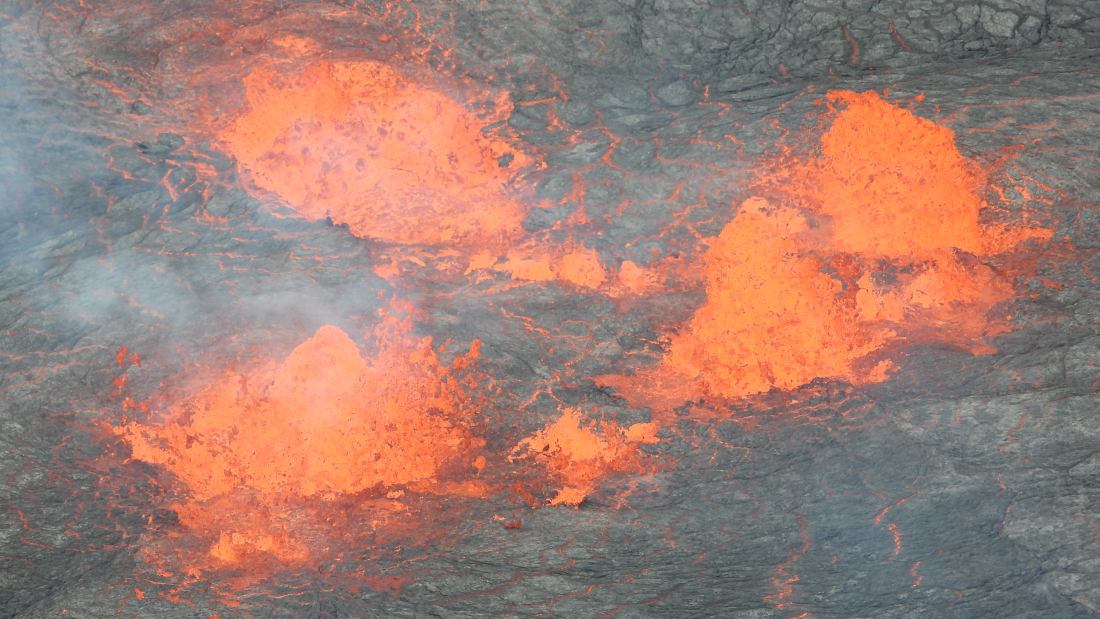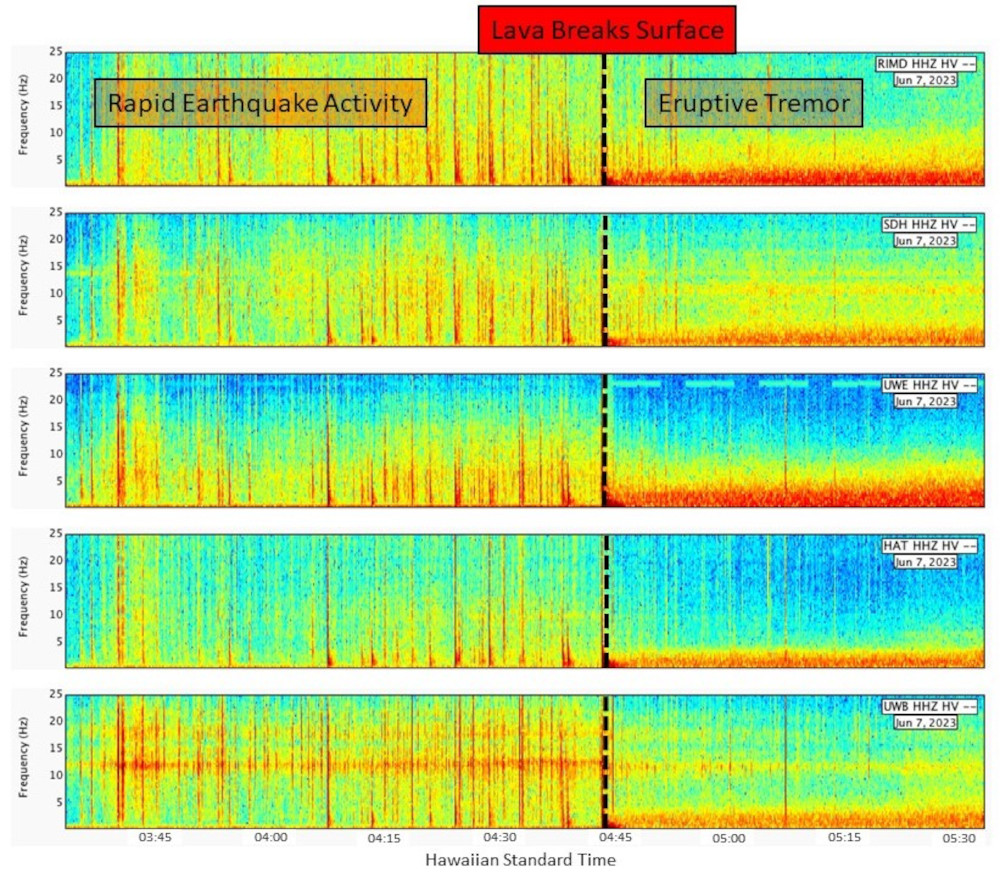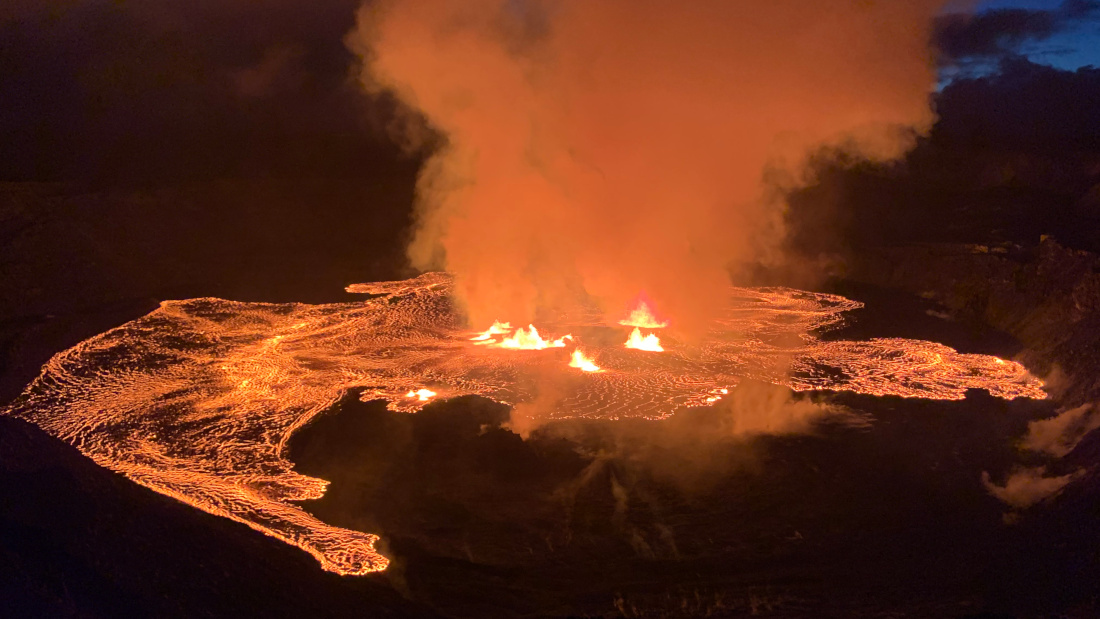
USGS: “A telephoto view of the locus of four lava fountains in the southern part of Halema‘uma‘u’s active lava lake during the mid-afternoon of June 7, 2023. These fountains were approximately 4-9 meters (13-30 feet) high throughout the afternoon, with occasional bursts that were higher.” (USGS photo by K. Lynn)
(BIVN) – Kīlauea volcano is erupting, with all lava confined to Halemaʻumaʻu crater within Kīlauea’s summit caldera. Scientists say no unusual activity has been noted along Kīlauea’s East Rift Zone or Southwest Rift Zone.
The lead-up to the latest eruption is examined in the latest Volcano Watch article written by the U.S. Geological Survey Hawaiian Volcano Observatory scientists and affiliates:
Kīlauea volcano began erupting within Halema‘uma‘u crater at the summit during the early morning of June 7. The eruption marks another in a series of recent eruptions that the Hawaiian Volcano Observatory has been able to successfully forecast!
For days to months leading up to all eruptions at Kīlauea since 2018, as well as Mauna Loa in 2022, increased earthquake activity and ground inflation suggested that the magma storage systems below were under stress.
HVO scientists have noted these periods of “increased unrest,” and they closely monitor the data streams for signals that an eruption may be imminent. In most recent cases, the signs of an imminent eruption become evident only about an hour before the eruption occurs.
The clearest signals before these recent eruptions are rapidly occurring earthquakes—most not large enough to be felt—as rocks beneath the surface break, along with an increasing rate of inflationary ground motion as pressure builds.
These signals indicate that magma is creating a pathway towards the surface. Eventually, fountains of lava burst from the ground and a conduit is established; volcanic tremor—a signal indicating fluid movement, like the hum of water moving through a garden hose—begins to replace the earthquakes, slowly becoming the dominant signal. Ground motion then begins to deflate, indicating the release of pressure within the magma system.

USGS: “Data recorded on June 7, 2023, by five seismometers located in Kīlauea summit region. The data is shown as spectrograms, which display the energy of seismic events (vertical axis) occurring over time (horizontal axis). Distinct earthquake events are the vertical red spikes in the left side of the plots whereas volcanic tremor is the horizontal red band in the right side of the plots.” (USGS plot)
An outlier is the onset of the January 2023 eruption at the summit of Kīlauea. This eruption occurred mere weeks after the previous one had ended in December 2022. Rapid earthquake activity occurred for about 30 minutes, followed by an hour of relative seismic silence before lava broke the surface with eruptive tremor. One hypothesis for why this occurred is the large amount of molten material stored beneath the surface of Halema‘uma‘u crater floor, in combination with the short timeframe following the previous eruption.
With close attention to the data on June 7, HVO scientists were able to identify the precursory activity that closely mirrored previous recent eruptions. Kīlauea’s alert level and aviation color code were elevated to WATCH/ORANGE at 3:14 a.m. HST, indicating that an eruption was imminent. HVO field staff were notified and they hurried to the crater rim; just before 4:45 a.m. HST, lava fountains illuminated webcam views and the eruption began. This dynamic activity is confined to Halema‘uma‘u crater within Hawai‘i Volcanoes National Park. If you can’t view it in person, check out the eruption livestream.


by Big Island Video News7:50 am
on at
STORY SUMMARY
HAWAIʻI VOLCANOES NATIONAL PARK - Scientists look back on how they forecast, to some degree, the latest eruption at the summit.